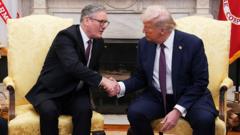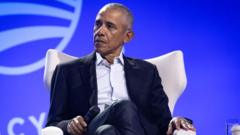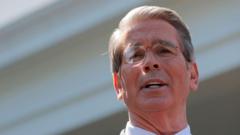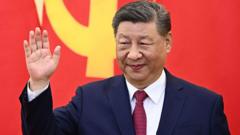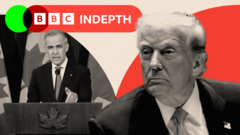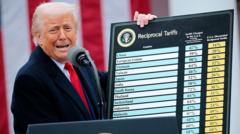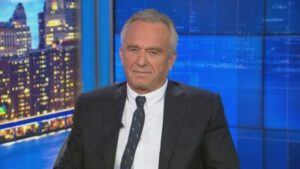As President Trump's administration paused reciprocal tariffs, the rising influence of Treasury Secretary Scott Bessent over trade hawks highlights a complex interplay of power within a turbulent White House.**
Unpacking the Complex Dynamics of Trump’s Tariff Policy Shift**
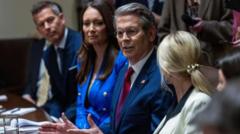
Unpacking the Complex Dynamics of Trump’s Tariff Policy Shift**
A closer look at how internal shifts within the Trump administration influenced tariff policies and market behavior.**
In a striking turn of events, the Trump administration recently paused a series of sweeping reciprocal tariffs, a decision that sent ripples through global markets. Central to this decision was Treasury Secretary Scott Bessent, who, in an impromptu press briefing, portrayed the decision as courageous and prudent. Bessent's prominence in this moment underscores a shift in the administration's internal dynamics, notably contrasting with the more hawkish views of Commerce Secretary Howard Lutnick and trade adviser Pete Navarro.
"The dynamics involved are notable," commented William Alan Reinsch, former head of the National Foreign Trade Council. "Bessent is clearly playing the role of the 'good cop,' while Lutnick and Navarro assume the 'bad cop' position." These roles, whether intentional or not, reflect a larger intra-office strategy aimed at managing both public perception and market reaction following the tariff's abrupt changes.
In the lead-up to the April 9 announcement, Bessent engaged in extensive discussions with business leaders, which some analysts believe played a pivotal role in swaying President Trump’s opinion. Bessent's previous hesitations regarding tariffs and his background in finance provided a uniquely persuasive approach to the President, who had appeared disconnected from market signals. Reinsch pointed out that Bessent effectively redirected Trump’s focus from a hard-line tariff approach to one more palatable for financial markets, emphasizing the need for a holistic vision that aligns with Trump's objectives.
Interestingly absent from the narrative were Lutnick and Navarro, fueling speculation that their hardliners approaches may not align with Trump's emerging path. "There’s clearly been a change in the pecking order," noted one White House insider, reflecting on the unusual absence of key figures during critical discussions. The mixed signals from various administration members, according to long-time Treasury official Mark Sobel, create an environment of uncertainty, leading to market volatility.
Consultant Terry Haines theorized that the White House's strategy involved presenting various figures to the media to garner public attention, despite the confusion it engendered. As the administration juggles different public spokespersons, concerns arise over the clarity and consistency of messaging, which plays a significant role in market sentiment. While Bessent's emerging voice as a mediator suggests an overall aim for stability, the ongoing presence of diverse philosophies within the administration continues to keep markets on edge.
Economists anticipate that Bessent’s increasing role in tariff policy may foster a more coordinated approach in the future, easing market anxieties. Andrew Hale from the Heritage Foundation suggested, "As we transition into a more structured narrative, we should likely witness increased market certainty," a sentiment echoed by various market analysts viewing the administration's strategy through a wider lens.
Ultimately, the intersection of personalities and their contrasting viewpoints shapes the trajectory of trade policy, resonating beyond the borders of the United States and influencing global economic health amid uncertain times.



